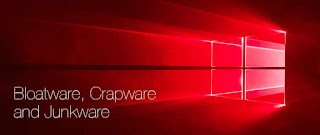LET'S
TALK ABOUT... UEFI -> 10 THINGS YOU SHOULD KNOW
1: UEFI IS THE REPLACEMENT FOR BIOS
The BIOS (basic input/output system) has been at the heart of the PC design for well over 30 years now. It is the piece of firmware that provides the operating system with a standard interface to the functionality of the computer. Unfortunately, its design is quite outdated, carrying a number of limitations that are not acceptable in the current age of computing. UEFI is the replacement for BIOS, and it brings with it a host of modern functionality to carry PCs through the next few decades.
2: IT ENABLES BETTER DISK SUPPORT
UEFI finally breaks free of the old DOS-style master boot record (MBR) disks, taking us into the GUID partition table (GPT) future. While not all operating systems support booting from GPT disks (notably, 32-bit versions of Windows), GPT support at the firmware layer will allow disks of enormous size to be used, even for booting the operating system.
3: APPLE ALREADY USES IT
Haven't heard of UEFI much? That's because while it is already in use, the most mainstream system out there using it is Apple, which isn't terribly friendly to tinkerers. It has also been used in Itanium systems for some time, as well as many embedded systems.
4: IT CAN BE EMULATED
Already, a number of virtualization platforms can emulate UEFI firmware, which allows you to load UEFI-dependent operating systems within them. Some examples are VirtualBox and Qemu. And yes, this means that it is technically possible to run OS X in a virtual machine under those environments.
5: BOOT LOADERS ARE NO LONGER NEEDED
UEFI takes the place of the traditional operating system boot loader, which relegates any boot loading tasks to be done within the operating system itself (like asking to boot in a Safe Mode). As a result, you have one fewer thing to break or make decisions about.
6: IT DOES NOT HAVE TO REPLACE BIOS...
UEFI can sit on top of the traditional BIOS and act as an interface between it and the operating system. Like BIOS, it presents a standardized view of the hardware to the operating system, allowing operating system makers to build on top of it and have their OSes work on a variety of motherboards.
7: ...BUT IT CAN USE BIOS ALTERNATIVES
At the same time, UEFI acts as an abstraction layer between the firmware that acts as a BIOS and the operating system. This means that an equipment maker can use whatever it wants to in the role that the BIOS fills and put UEFI on top of it and an operating system that uses UEFI will work just fine. Indeed, makers are free to build UEFI implementations that are complete top-to-bottom and do not need any firmware below them in the stack.
8: THERE IS WIDESPREAD INDUSTRY SUPPORT
The UEFI standard enjoys a large amount of support within the industry already. The UEFI standards organization has companies like Intel, AMD, Apple, Microsoft, and a number of BIOS and motherboard makers on it. As a result, UEFI will be the way forward, not just some dead standard left in the industry's wake like so many other initiatives. Modern operating systems are all compatible with UEFI as well.
9: YOUR JOB WON'T CHANGE MUCH
Unless you are working as an embedded systems engineer or write low-level code for an operating system, UEFI probably won't affect your daily tasks. Sure, there are some IT roles that involve digging into the BIOS, but for the work they typically do, the differences between BIOS and UEFI will not make an impact on their work life. The big thing for IT staff to learn will be how to work with GPT disks in more recent operating systems.
10: UEFI CAN BE A DEVICE DRIVER TARGET
One advantage of UEFI is that device drivers can target it instead of the specific hardware. This means that instead of needing to write drivers for different platforms, they can just write it once. Well, you are a PC person, what do you care, right? This will be huge for Windows 8, which will run on both x64 and ARM architecture. As a result, Windows 8 on ARM could very well come out of the gate with better driver support than Windows Vista.








,%20Endpoint%20Detection%20and%20Response%20(EDR),%20and%20Extended%20Detection%20and%20Response%20(XDR).gif)
